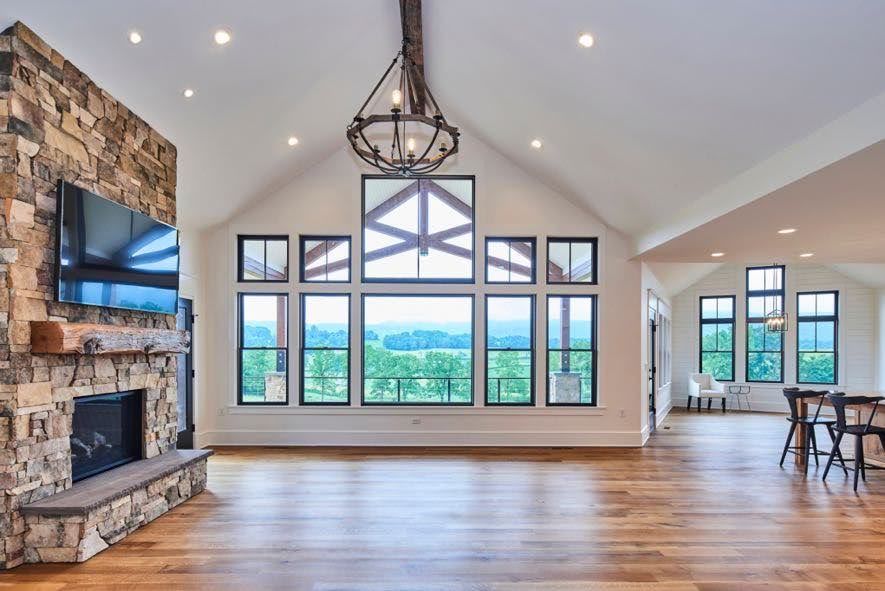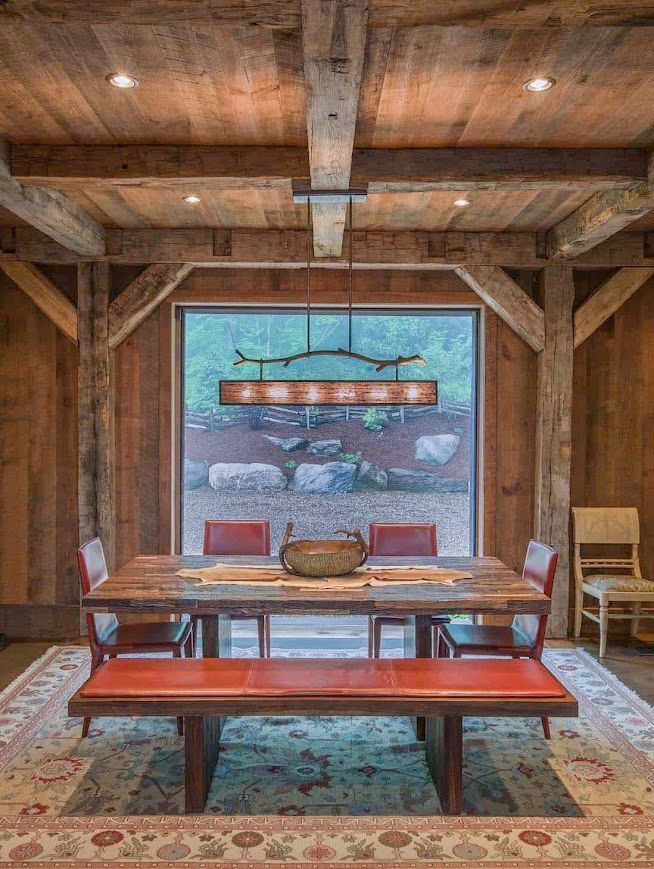Top Barn-Style Homes Trends You Don't Want to Miss
fresh barn-style home trends for modern living and design

Barn-style homes are more popular than ever in America. Their mix of rustic charm and modern comfort appeals to homeowners looking for something unique. These homes, inspired by old farm buildings, feature bright, open spaces and a unique character you don’t find in most modern houses.
If you’re considering a barn-style home or just love the design, here are some exciting trends shaping these beautiful and functional homes today.
What Makes a Barn-Style Home?
Before diving into trends, it’s important to know what defines a barn-style home. Here are some key features:
- Distinctive rooflines – Think steep gable or gambrel roofs, often seen in barns.
- Open layouts – Wide, open spaces for a free-flowing interior.
- Exposed beams – Visible wood posts and supports that highlight the barn's structure.
- Big windows and doors – Large openings that bring in lots of natural light and resemble traditional barn doors.
- Natural materials – Use of wood, stone, and other elements that give a rustic yet timeless feel.
Leading Barn Home Trends for 2025
1. Genuine Historic Frames
Many barn-style homes now use real historic barn frames for their core structure. Here’s how:
- Using old wood – Builders salvage frames from barns built in the 1700s and 1800s.
- Preserving history – Details like hand-carved joints and aged textures add charm and tell a story.
- Unique character – No two homes are alike because of the marks and history on each beam.
These frames bring deep character to a home and connect today’s living spaces to America’s farming past.
2. Blending Indoor and Outdoor Spaces
Modern barn homes are designed to feel connected to the outdoors. They achieve this through:
- Glass walls – Floor-to-ceiling windows provide stunning views without losing the barn's shape.
- Outdoor rooms – Covered patios or decks feel like updated versions of old equipment sheds.
- Courtyards – Adding enclosed outdoor spaces flooded with natural light.
- Sliding barn doors – Large doors that open wide to patios or gardens, inspired by traditional barn doors.
3. Combining Old and New Materials
Barn-style homes are blending traditional and modern materials in creative ways, such as:
- Wood and steel – Pairing weathered timbers with sleek, industrial metal for a clean look.
- Glass accents – Modern windows and walls open up spaces and brighten interiors.
- Concrete additions – Polished floors or concrete walls add durability and style.
- Stone bases – Masonry foundations ground the home with a natural, solid feel.
4. Going Green with Energy Efficiency
Sustainability is a key focus in modern barn homes. Top eco-friendly designs include:
- Insulated wall panels – Structural insulated panels (SIPs) create tight, energy-saving shells around homes.
- Solar positioning – Homes are designed to use sunlight for heating or cooling naturally.
- Geothermal heating – Systems that use underground temperatures for efficient climate control.
- Green roofs – Living plants on rooftops for better insulation and visual appeal.
5. Practical Layouts
Barn-style homes take inspiration from the practical layouts of old barns while updating them for modern living:
- Great rooms – Large central living spaces mimic the open threshing areas of barns.
- Loft spaces – Open upper levels for bedrooms or offices, much like hay lofts.
- Mudrooms – Functional entry spaces that pay homage to barns’ utility areas.
- High ceilings – Multi-level ceilings add drama and spaciousness.
6. Minimalist Designs
Some barn-style homes are adopting a simplified, modern look. This involves:
- Single-color exteriors – Clean, monochromatic paint or stain that highlights the home's overall shape.
- No frills – Focusing on the structure itself rather than decorative extras.
- Modern details – Clean-lined windows and doors within the recognizable barn form.
- Simple interiors – Streamlined spaces that highlight the rustic elements without feeling overdone.
7. Adaptive Reuse Inspiration
A few barn homes draw inspiration from how old barns were reused over the years. These design choices celebrate their history:
- Keeping imperfections – Leaving marks and irregularities to show the barn's original purpose.
- Layered materials – Showcasing the different materials added during various updates.
- Honest design – Choosing function over decoration, staying true to the barn's working roots.

How to Add Barn Style to Your Home
If you’re thinking about building or updating a barn-style home, here are some practical tips:
For New Homes:
- Focus on the shape – Start with the iconic roofline and barn-inspired proportions.
- Highlight the structure – Make sure the wooden beams and framing are prominent design features.
- Use open plans – Keep spaces airy and connected, just like classic barn layouts.
- Mix rustic and modern – Pair natural materials with sleek, contemporary accents.
For Renovations or Additions:
- Work with what’s there – Blend barn-style elements carefully with your home’s existing design.
- Add key features – Incorporate sliding barn doors, cupolas, or exposed beams for a barn vibe.
- Connect materials – Use stone, wood, or other rustic elements between old and new spaces.
- Get the proportions right – Scale barn-inspired features to fit in with the rest of your home.
By thoughtfully incorporating these ideas, you can strike the perfect balance between barn charm and modern style. Whether you’re building a new home or exploring a renovation, barn-style design offers a timeless, distinctive appeal that truly stands out.
How We Work with Historic Barn Frames
At Bay & Bent, we specialize in using historic barn frames to craft custom homes packed with heritage. We find and disassemble old barns with care, restoring each beam at our facility. These historic frames are then shipped and are ready to integrate into new homes.
Our clients love these frames because they carry stories and craftsmanship from the past that simply can’t be copied. They give homes a sense of authenticity, connecting families to America’s rich agricultural history.









